We will attempt to explain the science behind plasma surgery in a straightforward, physicianfriendly manner, eliminating math and physics jargon as much as possible. Rather than teaching mathematics, it is our hope that this text will allow the reader to understand and mentally visualize the subject matter. Our goal is to create a clear, correct view of physics while developing in the reader an understanding of the basic concepts of this field. When topics found in basic physics books are not correct, we will tell you this. When you read advanced physics, you will realize that much of the material found in a first-year physics book are “guesses” or “educational crutches,” but is not actually correct. We will point out these inaccuracies in order to provide a firm understanding of the topic at hand. Plasma Types of Matter The universe is composed of four states of matter: solids, liquids, gases, and plasmas. Although 99% of the universe is composed of plasma, it is the least understood state of matter simply because the other three states are those predominantly found on Earth. Our planet is one of the rare cases in the universe, a form of oasis containing a preponderance of nonplasma matter. (Note that the plasma state of matter must not be confused with blood plasma.) Plasma itself is highly protean, since more forms of plasma exist than do different forms of the other three nonplasma states of matter combined. All four states of matter are combinations of atomic particles and energy fields, including electromagnetic (EM), atomic bond, and gravitational, among others. Solids, liquids, and gases (also called “SLG matter”) contain atomic structures—electrons, protons, and neutrons. Neutrons (neutral charge) and protons (positive charge) are contained in the nucleus of the atom and are held together by nuclear atomic bond fields. Electrons are negatively charged particles that orbit around the nuclear particles in specific orbits held in place by various field energies. Structurally, an atom is often depicted in basic texts as a miniature solar system with a sun (the nucleus containing the protons and neutrons) and elliptically circling planets (the electrons). Our miniature solar system view of the atom makes things look neat and clean, but it simply is not so. The reason is that we really do not understand the fundamentals of the atom. For example, we cannot explain the inner structure or “micro-anatomy” of electrons, protons, or neutrons. Physicists have attempted to explain these basic concepts by giving us “definitions,” but they really do not understand these structures. Another point of contention is that texts show the orbits of various electron levels as specifically shaped configurations beginning with a simple circular or elliptical orbit that can greatly increase in orbit complexity. The trouble is that these proposed orbits are not really taken seriously except in providing a simplistic explanation. So we actually do not understand the structure or the dynamics of an atom. In addition, an accelerated charged particle—e.g., an electron—moving around a nucleus should cause an EM wave to be emitted by the electron. That is the basic mechanism of a radio transmitter. The production of this EM field would require the electron to expend energy at such a rate that it would crash into the nucleus in less than one millionth of a second. In this case, the atom would be, in effect, a “miniature” radio transmitter. However, electrons traveling in their atomic paths do not emit an EM field and they do not crash into the nucleus. Although we could give you possible reasons, we do not understand why these things happen in the manner in which they do. Early Physics: Delving Deeper into the Structure of the Universe In the late 1800s and early 1900s, we believed that the universe was filled with a substance called “ether,” which in turn bathed all the particles and energy. Then, around the time of Einstein, the scientific community came to believe that the ever-present ether did not exist, but rather that the universe was largely a vacuum surrounding the atoms and atomic particles. Over the past 20 years, many advanced physicists have become convinced that the original ether idea was actually correct. The question that remains is “What exactly composes ether?” Many believe that it may be composed of energy fields such as EM and gravitational waves. For example, if you turn on your television to a blank channel, you can see a picture of “snowy” background noise. Though not much thought was given to background noise on the TV, it was found during the mid-1900s that this snowy picture was actually generated by EM radiation originating from the Big Bang creation of the universe. This EM field is everywhere, and it may well be part of the universe’s ether. In that vein, Scientific American once created a series of images of the universe using several different cameras, each imaging different wavelengths of the EM field. These images vividly showed great variation in how the universe is perceived, depending upon the capability of the imaging device. Thus, what we humans see is a far from complete reality; for example, we have no way of visualizing “dark matter,” which composes a large part of our universe. All four states of matter are a mixture of atomic particles and field energy, including EM fields, short-range nuclear attractive forces for nuclear particles, coulomb repulsive forces for nuclear particles, gravitational forces, and so on. In general, solids, liquids, and gases possess much lower energy levels than plasma does. Atomic fusion occurs inside stars, wherein nuclei beginning with hydrogen (the smallest atom) are forced or fused together to create larger atoms. This process of fusion repeats itself until all the atoms in the periodic table are created. These atoms are then discharged by the star and expelled into space. So, all the atoms that comprise our earth were at one time manufactured in the belly of a star and were in the plasma state. Plasma is the state of matter that generally possesses the highest level of energy. Also, more forms of plasma exist than all of the other types of matter combined. It is just that Earth contains mostly low-energy forms of matter, such as solids, liquids, and gases, which is why we are unfamiliar with the plethora of plasma forms. Plasma is often described as “a sea of protons in an ocean of electrons,” wherein these charged particles gracefully oscillate to and fro within energy fields to make up the heart of plasma. Thus, Earth is an oasis of low-energy matter sitting in a universe composed largely of high-energy plasma. In basic terms, plasma is a mixture or a “soup” of electrons and protons in an intense energy field, mostly an EM field. As the energy level of an atomic structure increases, the bond energy is overcome and electrons are discharged into space. In this manner, SLG matter is once again recycled back into the plasma state. As more energy is being absorbed by the atomic structure, more free electrons are being discharged from the atomic lattice. Some of the parameters used to describe various forms of plasma include electron density, electron kinetic energy, and the frequency of the plasma electrons. The protons and electrons swing rhythmically back and forth in the intense EM field. Recall that Einstein taught us—with his famous “E=MC2”—that all particles and fields are forms of energy. Thus, atomic components are constantly reacting with fields. Recall that as charged particles accelerate, they emit EM fields into space, while these same particles are simultaneously absorbing other field energy—e.g., photon absorption by matter. This is the basis of photosynthesis, sight, suntan, and so on. Therefore, atomic particles are constantly recycling surrounding EM fields by simultaneously emitting EM fields and absorbing other EM fields. Thus, we can see a constant dynamic interaction and exchange of energy from fields by the molecular lattice that composes solids, liquids, and gases—namely, constantly absorbing EM energy fields while simultaneously emitting EM energy. The absorption and emission of energy is truly dynamic. Does every atomic particle absorb every EM field that comes near it, like a miniature vacuum cleaner? No it doesn’t. As people have preferences for certain foods, atoms have preferences for certain EM fields. We do not visually perceive everything around us because human photoreceptors have an affinity for specific EM fields, i.e., photons. Recall how the focused EM field of a yttrium:aluminum:garnet (or YAG) laser reacts differently with the irises of different patients. If matter is sensitive to a specific EM field energy, it absorbs it like a sponge does water. However, as the atom becomes progressively less compatible with or sensitive to a given EM field, it will progressively absorb the field less effectively. It is much like a radio. If a radio is tuned to a specific frequency, it will effectively absorb the EM field (radio wave), whereas increasing the distance of the frequency of the radio’s tuner mechanism from a given EM frequency, decreases the efficiency of absorption, and we will hear progressively more static. We emphasize that this principle is one of the basic tenets upon which Fugo blade technology is based. As we condition the output signal (i.e., the EM field) of the Fugo blade such that it is highly absorbed by the molecules in the intended field of incision, we produce a highly efficient interaction between molecules and EM fields that generates a unique, controlled form of plasma.1 Since plasma is an EM field embedded with oscillating electrons and protons, it reacts much like radio waves react with a radio tuner. If we condition our plasma to be compatible with a specific matter, then that matter will absorb the EM field of the plasma in a highly efficient manner. As matter absorbs progressively more energy, the bond energy of the molecular lattice is superseded, wherein the large molecule shatters into small pieces, much like shattering a glass pane on a concrete floor. As an incision is made using the Fugo plasma technology, molecular fragments stay in the plasma cloud for only a fraction of a second, where they serve as the fuel for the plasma cloud and are then discharged out of it. This process is similar to those atoms that have undergone fusion in a star, as described earlier in this chapter, and are then ejected from the star into space. Because the material in the path of the intended incision is the actual fuel for the Fugo blade plasma, Fugo blade technology creates “primary plasma.”2 Older, less efficient plasma cutters used fuels such as argon or butane to generate plasma. The kinetic energy generated from this form of plasma cloud was then used to “burn” a path through matter, which is why these systems operate on “secondary plasmas.” These secondary plasma systems are outdated, inefficient, and caustic to tissue. Dimension Theory of Matter and Energy Fields We should provide a short discussion to describe some very important characteristics regarding atomic particles and energy fields. Let us begin by addressing the doubt that exists among influential physicists regarding the concept of relativity as has been taught by Albert Einstein. First, we must appreciate that the concepts of “fast” and slow” are not simple, since it depends on the position of the observer. Relativity states that nothing can move faster than light (a small region of the EM spectrum), yet numerous books have been written about movement at “superluminal” speeds, faster than the speed of light. It is quite subjective and relativistic to define human movement as “slow” while dubbing light as “fast.” If you were a miniature observer sitting on a single photon traveling across the sky, then the photon upon which you are riding would appear to move slowly while the Earth below you would appear to move very fast, at the speed of light. As an observer on Earth, we see the motions and dynamics of all forms of atomic particles to be slow in comparison to those of EM fields. For example, the speed of a jet fighter is considered to be relatively slow in comparison to that of light, a form of EM field with a frequency of 1014 cycles per second and a moving velocity of about 299,792.5 km per second. The velocity of light keeps being revised and updated, since we still do not know its precise value. How could it be that we have been unable to exactly measure the speed of light? We know that light can react with the matter near it, but its actual velocity has eluded us. Photons can also be deflected by gravity; therefore, light rays moving past the sun will have their paths “bent.” Because of this, stars are often referred to as “gravitational lenses,” since they bend or diffract light. Before we can hope to understand physics, it is imperative that we understand the concepts of slow and fast. Einstein’s theory of relativity highlighted the significance of these concepts, which at first appear simple and an issue of common sense. We must keep in perspective that EM fields comprise the atmosphere through which charged atomic particles move while constantly and simultaneously absorbing and emitting various EM fields. Thus, the flow of energy in the universe is constantly being recycled. Many physicists believe that our universe contains multiple overlapping planes of existence, or dimensions, that allow certain interactions between the dimensions while retaining their own distinct dimensional characteristics of existence. Therefore, could it be that matter and EM radiation exist in different dimensions? If this were the case, then this would certainly explain much of the confusion in our attempt to quantitate and explain EM radiation and matter. In this scenario, the velocity of light would not be an actual speed of movement or velocity in our dimension, rather it would be a description of existence for the dimension in which light actually exists. This would help to explain why the concepts of light and relativity presented in books, do not often make sense. As an example, you can flip on a light switch, which allows the filament of the bulb to give off light, for which each and every photon moves at the speed of light from its very moment of conception. They do not begin at zero speed and rapidly accelerate to the speed of light; rather, they always and only exist at the speed of light because this is the nature of the dimension in which they exist. Articles that report “slowing down the speed of light” are not reporting what occurs to the speed of a given photon.2 As light travels through space, photons can be absorbed by matter. While absorbed, the photon is no longer moving as an EM field, but rather it exists as energized matter. Therefore, the overall voyage of a photon being converted to energized matter and then re-emerging as a photon will cause a ray of light to appear to have slowed down because of its existence in the energized matter state. In this way, the overall velocity of the light is slowed down, whereas the velocity of a photon is not. Furthermore, if we attempt to accelerate solid matter—e.g. an electron—to the speed of light, it would take a gigantic amount of energy. Governments and universities have built particle accelerators that are bigger than a football field and require immense energy, yet they have still been unable to achieve this goal. Yet, turn on the light and each photon that it emits moves at the speed of light from its very inception. How is it that we cannot make an electron travel at the speed of light and yet photons always traveling at the speed of light are unable to be slowed down? Clearly, using speed or velocity to measure the differences of objects in different dimensions is merely a rough, inaccurate method of description. Understanding this issue allows us to have a more precise understanding of the components of plasma—namely, the EM field and the matter. This existence of visible light, a small part of the EM spectrum existing in a separate dimension and governed by its own principles, is the reason for the paradox of light appearing simultaneously as a wave form and as small particles referred to as “photons.” The waveform-versus-particle debate has been argued extensively in the literature, with little clarity being shed on the topic. The frequency spectrum of the EM field is massively huge, definable only by high-order exponents, whereas visible light accounts for only a minute section of the EM spectrum. In the early 1900s, scientists defined the energy content of each frequency of the EM spectrum with the formula: E = h V, where E is the energy of the photon, h is the universal constant known as Planck’s constant, and V is the frequency of the photon. Since the spectrum of frequencies of the EM field is almost limitless, there appear to be limitless types of protons as well. This has been confusing to some because nature usually functions on simple mechanisms. Recall that the nucleus has two basic particles— protons and neutrons. So, how is it that the types of photons in the entire EM spectrum account for nearly limitless types of photons? One interesting possible explanation is based on the types of waveforms—namely, transverse waves and longitudinal waves. Classic physics of the 1900s postulated that EM fields are transverse waves whereas sound waves are described as a longitudinal wave. Transverse waves oscillate repeatedly upward then downward, like waves on the top of the ocean. On the other hand, longitudinal waves are repeating zones of highly dense, compressed particles followed by zones of low-density, rarified particles. Sound waves are longitudinal waves with repeating zones of compressed air molecules followed by rarified air molecules. If we were to postulate that light is a longitudinal waveform rather than a transverse wave, then it would be possible to use a single type of photon to account for every frequency in the entire EM spectrum. This single photon type certainly complies with nature’s rule of simplicity. High frequencies would result in a short pulse of dense photons hitting matter, which raises the energy level of the molecular lattice. This would be followed by an equally short pulse of low-density photons hitting matter, providing less energy dissipation by the molecular lattice before it is hit by another high-density wave of photons that further raises the energy level of the matter. Slower frequencies would possess longer zones of high-density photons followed by equally long zones of low-density photons, which would allow the matter to more effectively dissipate accumulated energy. All this could be accomplished by a single type of photon and would eliminate the paradox of EM wave versus EM particle as seen in the transverse EM wave model. We want to underscore that we did not expend effort and time describing the EM field as a mere academic exercise. You cannot understand or appreciate plasma unless you firmly grasp the concept of the EM field. The EM field is the backbone and skeleton of all plasma. As stated earlier, plasma has many more forms and configurations than all the other three states of matter combined. One of the beautiful aspects of plasma is that you can condition and modify it, providing an almost limitless array of plasma forms. Early in our research, we filmed a plasma cloud that had a discrete periodicity, which we were able to modify and morph into a spectrum of organized structures. One of these images contained periodic nodes and looked like a barber’s pole, prompting us to name the image the “barber pole photo” (Figs. 2.1 and 2.2). Figure 2.1. High-speed filtered imaging of Fugo blade cutting filament. Left: Inactivated cutting filament is polelike and lacks plasma; therefore, it has a dark color. Right: Activated Fugo blade cutting filament is precisely tuned such that the plasma presents a periodic pattern, which was coined “barber pole plasma” because it resembles a barber pole. Figure 2.2. High-magnification view of the activated tip presented in Figure 2.1, right. We see the precise periodic nature of the plasma. This is changed by minimally altering the tuning parameters of the Fugo blade console. The Fugo Blade in Plasma Surgery The Fugo blade is a solid-state electronic system that produces efficient plasma surgery with primary plasma. The technology is protected by over 100 patents worldwide. The system has been cleared by the U.S. Food and Drug Administration (FDA) for human applications including: anterior capsulotomy for cataract surgery, glaucoma filtration from the posterior chamber of the eye through the pars plicata, iridotomy for glaucoma, anterior chamber or intraocular lenses (IOLS) and implantable contact lenses (ICLs), and dentistry. The Fugo blade is portable and easily operates on batteries or wall current (Fig. 2.3). The system is a complete solid-state electronic system powered by low levels of electrical energy. The system emits a conditioned EM wave.3 In a sense, it is an EM wave transmitter that transmits a specially conditioned EM wave that has quite unique characteristics. This EM wave is conditioned such that it is highly absorbed by the matter in the intended path of incision. EM energy may be reflected by matter, pass through matter, or be absorbed by matter. Recall that visible light may reflect from the surface of a mirror, x-rays can pass through a hand, and visible light is absorbed by photoreceptors. By making the transmitted EM field of the Fugo blade resonant with the matter in the intended path of incision, we create a device that allows matter to literally suck the transmitted EM field into the molecular lattice of the intended incision path. This highly efficient absorption of the EM field by matter reduces the total amount of energy needed to perform its functions. This is why the Fugo blade works equally well on batteries or wall current. Although the Fugo blade looks like a standard electrosurgical system, its mode of action is that of a laser. The Fugo blade requires no grounding plate, and the cutting tip is blunt when it is inactive. When activated, this blunt cutting tip cuts more sharply than a diamond blade. The blunt cutting filament is a transmitting antenna in the truest sense. This ability to focus, concentrate, and control a transmitted EM field is a very powerful capability. This is one of the hallmark capabilities of Fugo blade technology.4 Figure 2.3. The Fugo blade system includes a batterypowered electronic console, an activation foot pedal, an ergonomic hand piece, and a charging unit (not shown). Let us give a simple example to demonstrate just how powerful it is to possess the capability of concentrating and focusing energy. If we captured the electrons that light one 100-W light bulb for just 1 second in a magic bottle, and then collected an identical set of electrons in a second magic bottle, we would then be able to measure the repulsive force of the two bottles filled with negatively charged electrons as we moved the bottles closer together. At 1 yd of separation between the two bottles, they would possess an enormous repulsive force, capable of lifting ten average-sized battleships out of the water simultaneously. Just think that such power comes from collecting and controlling the energy from a single 100-W light bulb that was lit for two 1-second periods. This is precisely why the focused EM field of the Fugo plasma blade is so powerful. The absorption of this focused EM field into the molecular lattice has immense ability to alter and rearrange the structure of a molecular lattice in an intended field of incision. We will now explain the difference in action between a standard electrosurgical system, a laser, and the Fugo blade. The mode of action of standard diathermy is demonstrated in Figure 2.4. Recall that all present electrosurgical systems operate on a principle known as “diathermy.” Standard electrosurgical systems do not operate by conditioning the emitted EM field to be highly absorbed by the matter in the intended path of the incision. Therefore, the EM field conducts through the body tissue as if it were passing through a poorly conductive wire. In this way, the EM field encounters a high degree of resistance, which creates resistive heat. This resistive heat causes the tissue to heat up and burn, thus creating a burn path in the tissue with charred margins (Fig. 2.4). Figure 2.4. A diagram of standard electrosurgery. Left: The pole-shaped electrosurgical probe is on the left and the tissue is on the right of the image. The probe is transmitting large amount of current into the tissue, which is seen to cause a high degree of resistive heat (diathermy) and results in a burn path through the tissue. These systems must be plugged into a wall outlet to provide sufficient electrical current for this process. Right: High-magnification view of the process discussed above. We see the very end of the electrosurgical probe passing energy into the tissue on the right side of the image. In this schematic diagram, round black dots represent molecules and black lines represent the molecular bonds. In the area of the probe tip we see that the molecules and bonds are charred, twisted, and burnt, an effect that has been supported by academic histologic studies. Let us now focus on how standard electrosurgery units operate. In simple terms, monopolar electrical cutting units have a hand piece and a collector plate that is placed somewhere on or near the body. In the case of bipolar forceps-style units, the hand piece has a jeweler-forceps configuration. The current is passed down one of the sides of the forceps then through the tissue and back up the other side of the forceps. These bipolar units, therefore, do not need a collector plate to collect the current, as monopolar units require. Most electrosurgical cutting units are a monopolar unit with a collecting plate design; thus, we will proceed to discuss this type of system. These monopolar systems emit conditioned EM fields from the blunt cutting tip with electronic modification such as rectification and filtration, which allow the surgeon to change the type of burn in tissue. Nonetheless, all modes produce heat, which causes a burn or cut with charred incision walls, a cauterizing (tissue-burning) hemostasis, or both. These types of systems produce an EM field that is transferred into tissue wherein it is poorly absorbed by the molecules and instead passes through the tissue as if the tissue were a wire that presents resistance. As the electrical energy passes through a resistive medium, it produces a great deal of heat. This is similar to the heat produced by friction—e.g., a drill bit grinding against a metal plate gets extremely hot. Keep in mind that the energy emitted by the electrosurgical unit is truly an EM field stream rather than a stream of electrons. However, this EM field will in turn react with electrons in the tissue in a manner that causes the electrons to pulse violently in the molecular lattice and thereby generate heat. The EM field travels at the speed of light, whereas the electrons in the tissue move in a random fashion at about 1/200 the speed of light. However, the movement of the electron through the tissue in a specific direction is minuscule, since the electrons bounce around the lattice of the molecular tissue like a ball bouncing randomly across the surface of a pinball machine. In a similar fashion, the filament of a light bulb is not an electron pipe; rather, the EM field that flows out of the wall outlet passes through the cable of the lamp then through the bulb filament. The EM field causes the electrons in the bulb filament to pulse forcefully such that they generate heat to a level at which light is given off. Therefore, the source of the electrons that cause an effect in both the tissue and the light bulb filament are from the electrons of the body tissue and the bulb filament itself. Electrons do not flow out of the wall electrical socket; rather, an EM field that flows at the speed of light flows out of the wall socket. This is similar to what occurs when surfers encounter a large wave, wherein the wave forces or pushes the surfer upward in a forceful pulsatile fashion for several seconds. The EM field does to the electrons in a bulb filament or in a tissue incision path precisely what an ocean wave does to the surfer. In both cases, the electron or the surfer is caused to accelerate, or pulse, for a short time. A high percentage of this energy transferred to the pulsed electron is converted into heat because of the resistive nature of the tissue. In summary, Figure 2.4 shows an EM field being discharged from the electrosurgical unit and into the body tissue, where it causes electrons in the tissue to pulse and thereby cause a resistive heat discharge sufficient to burn a path in the tissue. Therefore, the incision path is a burnt cavity with charred distorted walls. The diagrams in Figure 2.5 show a laser beam on the left being focused on tissue, thereby creating a laser ablation path. Lasers are complicated, highly sensitive mechanisms that allow EM fields (i.e., light) to be focused on matter. EM fields are made up of small packets of energy called “photons” or “Planck EM quanta” (or PEQ). These photons are highly concentrated and focused by the laser such that they dramatically raise the energy level of the molecular lattice of the matter to a point at which it shatters into small pieces. Lasers suffer from high cost as well as control issues, making damage to adjacent structures an issue as well as reflected laser light causing foveal burns that result in blindness. The diagrams in Figure 2.6 show the Fugo blade creating a plasma ablation path in tissue. The Fugo blade console looks grossly like a simple electrosurgical system, but actually functions similarly to a laser. The Fugo blade uses energy from batteries or a wall socket, then conditions, focuses, and concentrates the energy into an intense EM field that coats the blunt cutting filament. Unlike a standard electrosurgical system, the EM field of the Fugo blade is intensely absorbed by the matter in the intended path of incision. When the energy level of the matter exceeds the molecular bond energy, the molecules shatter. This is called the “photon bath theory” of ablation and occurs with the laser as well as the Fugo blade. When the intense EM field of the Fugo blade comes in contact with matter, it hyperexcites the molecules in the molecular lattice. The molecules then shatter into small fragments. These small fragments are absorbed into the intense focused EM field coating the blunt cutting filament of the Fugo blade. These small fragments are then used as the fuel for the plasma cloud of the Fugo blade.5 By using the atomic particles in the path of the incision as the fuel for the plasma cloud, the Fugo blade creates “primary plasma,” which has minimal impact on the tissue adjacent to the incision; therefore, this technique produces pristine incision walls.6 On the other hand, older approaches that use fuels such as argon or propane generate “secondary plasma,” which greatly damages tissue adjacent to the incision and therefore leaves charred, burnt incision walls. Figure 2.5. A diagram of laser cutting. Left: The laser is seen to project its coherent beam of EM field onto tissue. Right: A high-magnification view shows that the EM field of the laser makes an incision by causing a tissue disruption with involvement of molecules (round black dots) and molecular bonds (black lines). Figure 2.6. A diagram of Fugo blade ablation cuts. Left: The round, blunt cutting probe of the Fugo blade on the left of the image is seen to create a cool plasma field where it contacts tissue. Right: A high-magnification view shows that the cool plasma field transmits energy, which is then absorbed by the molecular lattice of the tissue in the same way that EM fields are transmitted and absorbed by tissue as seen with the laser. Both laser and Fugo plasma ablation have the capability of creating pristine incision walls. The thickness of the plasma cloud in the Fugo blade can be changed from 50 µm to 75 µm to 100 µm by simply changing a switch on the Fugo blade console. The left-hand image in Figure 2.7 is an unfiltered image that demonstrates a thick, bright plume of light (not heat) surrounding the thin, inner plasma cloud. The center image in Figure 2.7 is a moderately filtered view of the activated plasma tip that filters away the large ball of light surrounding the inner core of plasma. Therefore, one can see the thin layer of plasma that coats the blunt activated cutting tip. The right-hand image in Figure 2.7 is a dense filter image of the activated cutting tip wherein only the highenergy plasma field is visualized. Note the thin, bright layer of plasma that coats the blunt, activated cutting filament. In real time, plasma is highly dynamic, and therefore rapidly moves over the surface of the blunt cutting filament. Figure 2.7. Plasma coating an activated Fugo blade ablation filament. Left: An unfiltered view of the plasma shows a thick ball of light (not heat) that surrounds the blunt ablation filament (arrow). Center: A moderately filtered image of the activated Fugo blade tip shows a thin coating of plasma over the blunt filament. This looks like a stick (cutting probe) that is dipped into honey (plasma). In real time, this coating is swirling in a controlled fashion at extremely high velocities. Right: A high-density filtered image of the activated Fugo blade tip shows only the thin coating of plasma, which has the highest energy density of all matter in this photo. The Fugo blade system consists of an electronic console, a footswitch, and an ergonomic hand piece (Fig. 2.3). Unlike a diathermy unit, the hand piece of the Fugo blade contains internal electronics, and no collector plate must be placed on or near the patient. The Fugo blade is cleared by the FDA for anterior capsulotomy, transciliary filtration in glaucoma, and iridotomy for glaucoma, anterior chamber lenses or IOLs and ICLs. Each of the FDA clearances is a unique surgical procedure. The ophthalmic Fugo blade system performs all three procedures and is used worldwide. Many other surgical protocols are underway in and outside ophthalmology. The hand piece is sterilized in the same tray as the phaco hand piece. The unit is simple to maintain and use. Academic evaluation of the Fugo blade includes numerous clinical trials, as well as studies of histology and biomechanics. Some of the finest academic histologic studies include scanning electron micrographs of the wall of the capsulotomy created with Fugo blade plasma ablation. Also, high-resolution microscopy of Fugo blade plasma blade ablation paths in rabbit corneas were performed at Louisiana State University.6 Dr. David Apple’s group performed microscopy on Fugo blade capsulotomy rims and demonstrated that the Fugo blade produces the highly desirable “postage stamp margin” for capsulotomies.7 The basic findings from all these studies demonstrate that Fugo blade plasma ablation produces pristine incision walls, whereas diathermy produces charred, burnt, and irregular incision walls (Fig. 2.8). This is immensely important on a clinical level, since a clean incision wall eliminates the need for the breakdown and removal of charred debris, which delays healing, causes redness and swelling, and increases pain in soft-tissue incisions. Figure 2.8. Scanning electron microscopy images of standard electrosurgery versus Fugo blade plasma ablation. Left: Standard diathermy is seen to cause incision walls to have a burnt, blistered, and cauterized surface. Right: Fugo blade ablation paths create pristine incision walls. Biomechanical studies of the strength of the capsulotomy rim were performed at the University of South Carolina. This study demonstrates that the capsulotomy rim created with the Fugo blade was stronger than all other techniques, including diathermy, except for capsulorrhexis.7 A graph of different capsulotomy techniques has been generated based on the University of South Carolina data and is shown in Figure 2.9.8–10 Capsulorrhexis is the strongest capsulotomy rim because the Fugo blade ablates pristine capsulotomy walls wherever the surgeon traces or moves the ablation filament, and thereby does not stay within natural tissue planes of the anterior capsule. On the other hand, capsulorrhexis is a tearing of the anterior capsule, which stays within natural tissue planes. Once a capsulorrhexis escapes from the natural tissue planes of the anterior capsule, it has a high risk of tearing out into the periphery. A capsulorrhexis tear will continue to tear until it is completed because the head of the capsulorrhexis is an acute angle. Meanwhile, the Fugo blade ablation path creates round ends; therefore, they will not continue to tear spontaneously under normal stress. Nonetheless, a lysis of tissue in natural tissue planes usually provides capsulotomy rims that are stronger than lysis of tissue that are not within natural tissue planes. However, the Fugo blade allows the surgeon to make the capsulotomy as large as desired in a safe, controlled fashion. By increasing the capsulotomy from 5 mm to 7 mm, we decrease the force on the capsulotomy rim by 33%, which gives a Fugo blade capsulotomy a big advantage over capsulorrhexis. Figure 2.9. This graph shows capsulotomy rim strength based on various surgical techniques. This graph was generated from data that was compiled at the University of South Carolina, as discussed in the text. Note that the Fugo blade capsulotomy rim is significantly stronger than diathermy and is almost comparable to capsulorrhexis. Several clinical features of Fugo blade plasma ablation provide distinct advantages over prior methods of tissue incision.11 These features include: Resistance-free incision. Plasma ablation is a method of “erasing” tissue, thereby acting like a miniature eximer laser because it converts tissue into a mist of water vapor and aromatic molecular fragments. Plasma ablation eliminates jerky, uncontrolled incising motions, which present a danger during surgery. Pristine incision walls without cauterization. A pristine incision wall eliminates the tissues’ need to mount a process to break down necrotic debris then remove the debris from the incision cavity. This is why plasma ablation provides quicker healing, less redness and swelling, less risk of infection, and less pain. A noncauterizing hemostasis. Histologic studies have shown that the plasma ablation walls of the Fugo blade are pristine without cautery, yet clinical studies have shown that the Fugo blade produces hemostasis—a noncauterizing hemostasis. All other electrosurgical systems produce cauterizing hemostasis. Prior studies have demonstrated that exposure of blood to plasma stimulates hemostasis. Plasma exposure stimulates platelet plug formation, which secretes serotonin and epinephrine to constrict the vessel wall as well as factors that stimulate the coagulation cascade. Thus, plasma stimulates noncauterizing hemostasis. Antimicrobial activity. Infectious particles including viruses and prions are killed by exposure to plasma. Therefore, Fugo blade plasma ablation serves to disinfect while creating an incision path. This provides a significant advantage in reducing postoperative infection. In conclusion, the Fugo plasma blade is the first paradigm shift in surgical incision since the introduction of the laser in the mid-1900s. This chapter has explained the biophysics of the Fugo blade as compared with other methods of incision. We have attempted to explain the novel capabilities of plasma ablation surgery, which has the potential to allow surgical procedures that were not possible with older technologies. References 1. Fugo RJ, DelCampo DM. The Fugo blade™: the next step after capsulorrhexis. Ann Ophthalmol. 2001;33:12–20. 2. Sabbagh LB. The leading edge: harnessing electrons for a faster, smarter incision. Eyeworld. 1998;3:88. 3. Video journal of cataract and refractive surgery. New Developments New Devices Fugo Blade. 2002;18(1). 4. Singh SK. Fugo blade capsulotomy: a new high tech cutting technology. Trop Ophthalmol. 2001;1:14–16. 5. Ronge L. How to use the Fugo blade. EyeNet. 2003;7:23–24. 6. Peponis V, Rosenberg P, Reddy SV, et al. Study finds Fugo blade can be of use in corneal surgery. Rev Ophthalmol. 2006;8:94. 7. Izak AM, Werner L, Pandey SK, et al. Analysis of the capsule edge after Fugo plasma blade capsulotomy, continuous curvilinear capsulorrhexis, and can-opener capsulotomy. J Cataract Refract Surg. 2004;30:2606–2611. 8. Wilson ME, Trivedi RH. Technological advances make pediatric cataract surgery safer and faster. Tech Ophthalmol. 2003;1:53–61. 9. Wilson ME. Anterior lens capsule management in pediatric cataract surgery. Trans Am Ophthalmol Soc. 2004;102:391–422. 10. Trivedi RH, Wilson ME Jr, Bartholomew LR. Extensibility and scanning electron microscopy evaluation of 5 pediatric anterior capsulotomy techniques in a porcine model. J Cataract Refract Surg. 2006;32:1206–1213. 11. Singh D, Singh RSJ. Applications of the Fugo blade. In: Wilson ME Jr, Trivedi RH, Pandey SK, eds. Pediatric cataract surgery; techniques, complications, and management. Philadelphia, Pa: Lippincott, Williams & Wilkins, 2005:97–100.
 n this chapter we share the experiences that drew us to harnessing plasma energy in the program that we refer to as “Fugo blade technology.” Much of what has come to surprise us is not based on what is known in the scientific community, but rather on what is unknown, unclear, or just incorrect. The plasma technology of the Fugo blade has prompted us to continuously revise our ideas about the intricacies of physics. The more we persevered along the path toward understanding the heartbeat and pulse of plasma, the more we found that the foundation of academic physics was filled with contradictions and inaccuracies.
n this chapter we share the experiences that drew us to harnessing plasma energy in the program that we refer to as “Fugo blade technology.” Much of what has come to surprise us is not based on what is known in the scientific community, but rather on what is unknown, unclear, or just incorrect. The plasma technology of the Fugo blade has prompted us to continuously revise our ideas about the intricacies of physics. The more we persevered along the path toward understanding the heartbeat and pulse of plasma, the more we found that the foundation of academic physics was filled with contradictions and inaccuracies.
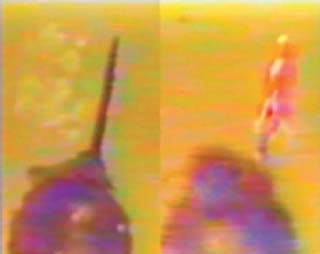

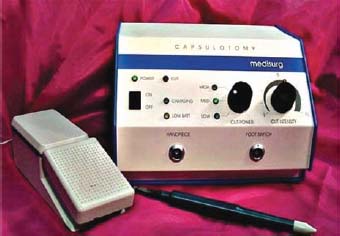
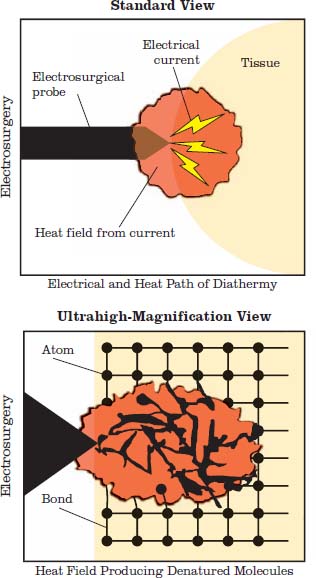
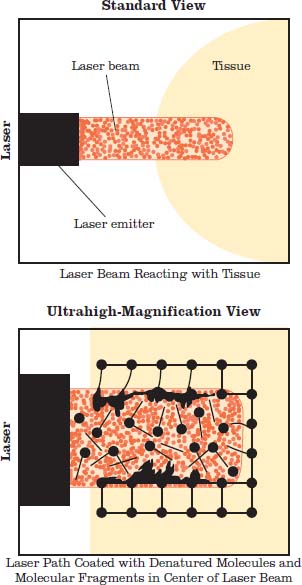
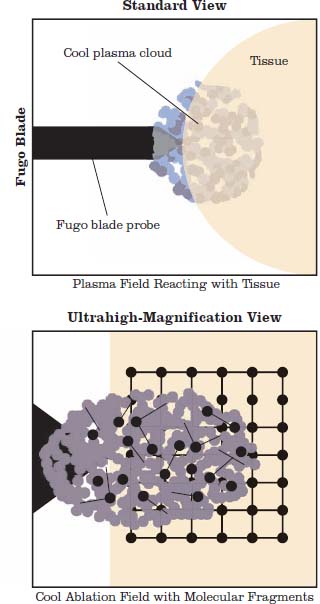
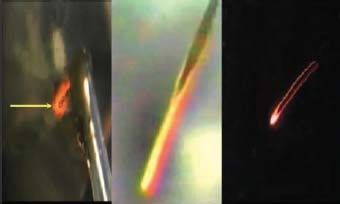
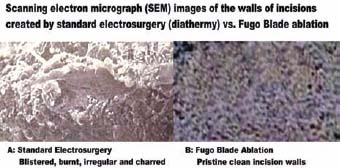
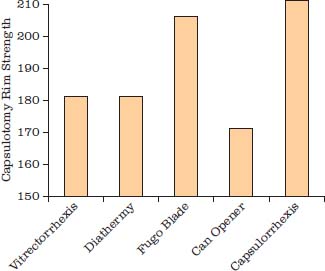
Stay updated, free articles. Join our Telegram channel

Full access? Get Clinical Tree


